Central Portugal is rich in history, from the Roman era through modern-day. Between Porto and Lisbon, the main highway winds through rugged hills and small towns that beckon.
While the two big cities are often the top of a Portugal itinerary, the central part of the country is absolutely worth a jaunt, whether just for a day trip or an extended countryside vacation.
It takes about three hours to drive between the two cities. Tourist attractions along this route include the university town of Coimbra, the medieval Templar town of Tomar, and the pilgrimage town of Fatima.
All are worth exploring as they are home to Baroque cathedrals, expansive libraries, and Roman ruins. If wandering off the beaten track sounds up your alley, stay in Coimbra for a few days and base to explore the remote eastern Portugal.
This is the third part in my series on Portugal
- Guide to Lisbon, Portugal – Europe’s Most Ascendant Destination
- Guide to Porto and the Douro Valley, the Port Wine Region
- Central Portugal: The Heartland

Coimbra’s university is the oldest in the Portuguese-speaking world. Benny Marty / Shutterstock.com
How to Get to Central Portugal
The two major gateways into Portugal are Porto’s Francisco Sá Carneiro Airport and Lisbon’s Humberto Delgado Airport. Central Portugal can be reached by car or train easily from either city. Coimbra is just an hour and a half from Lisbon by high-speed train, the Alfa Pendular; Tomar is even closer. Driving times are similar to train times, thanks to the highway that links Lisbon with Porto and Braga.
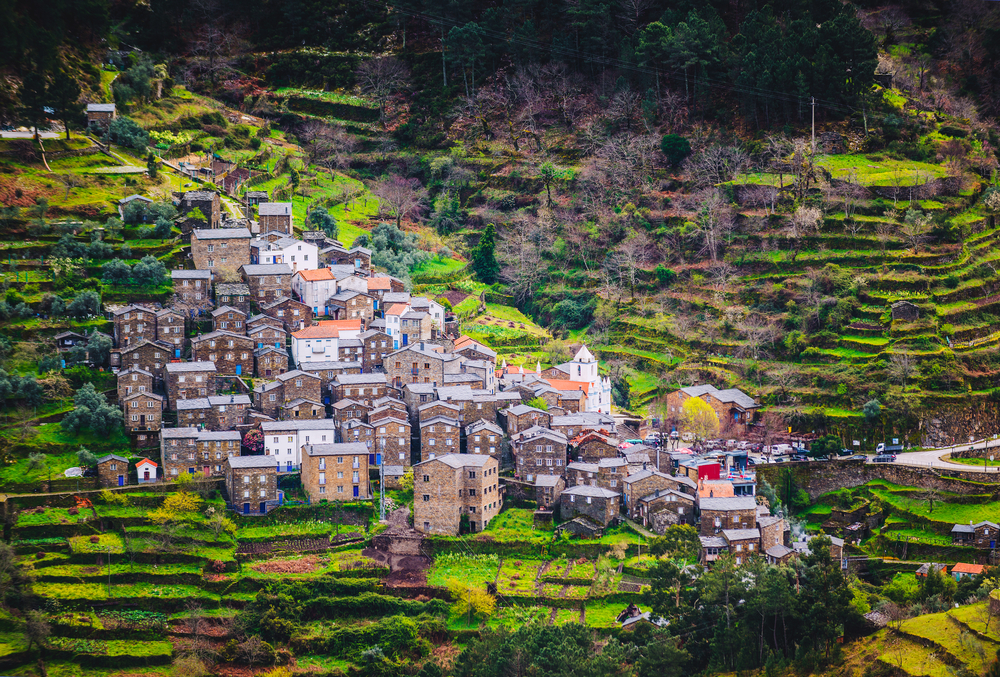
Piodao, Portugal is located a short distance from Coimbra, in Central Portugal.
Central Portugal
Central Portugal is everything from the Douro Valley south to Lisbon and from coast to the Spanish border. White Porto and Lisbon certainly have a lot to see and do, there’s so much here. Castles and fortresses line the mountains along the Spanish border. Over the centuries, various invaders have tried to conquer, usually failing, and today Portugal boasts the longest standing border in Europe. A lot of these castles are national monuments, and there is a 20-castle tourist route that hits many of the highlights, including the fortified town of Almeida.
Coimbra
Coimbra, Portugal’s largest university town and second capital city, is located approximately halfway between Porto and Lisbon. It is inland from both along the Mondego River. Coimbra has long been a crossroads in Portugal.
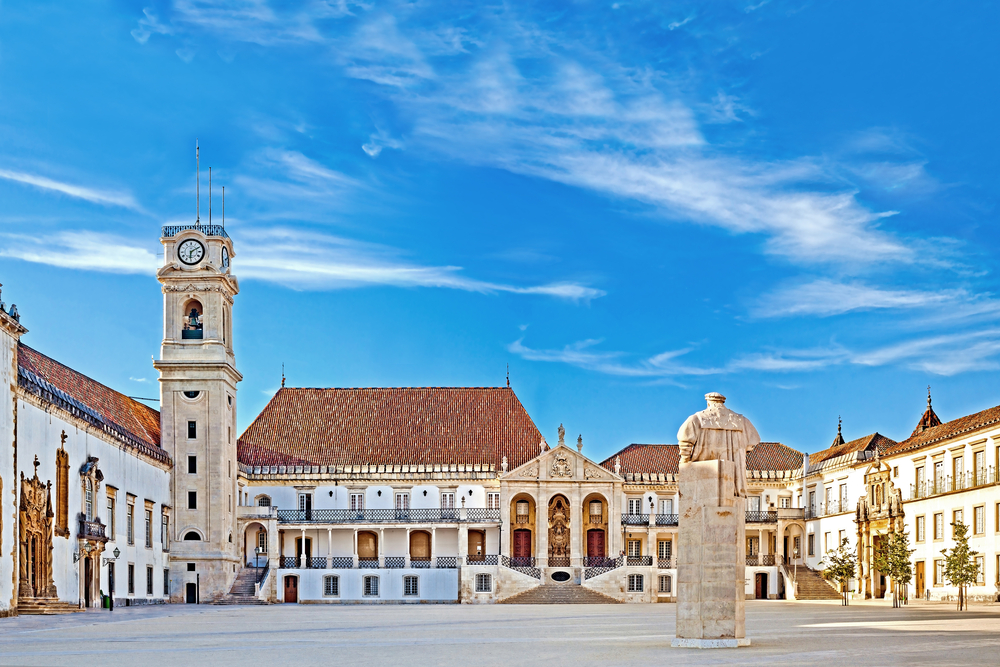
The University of Coimbra is the oldest university in the Portuguese-speaking world. It was founded in 1290.
Attractions here include the university, cathedral, and botanic gardens, as well as the historic town center that sits on the steep banks of the river.
The Romans founded Coimbra and called it Aeminium. Conimbriga, now a Roman ruins site, was the capital of this region. When the city fell to the Germanic Suebi in the 6th century, its inhabitants fled to Aeminium. There is little in the way of Roman ruins in Coimbra today. Visitors can see the remnants of the cryptoporticus, an underground gallery now part of the city’s museum.
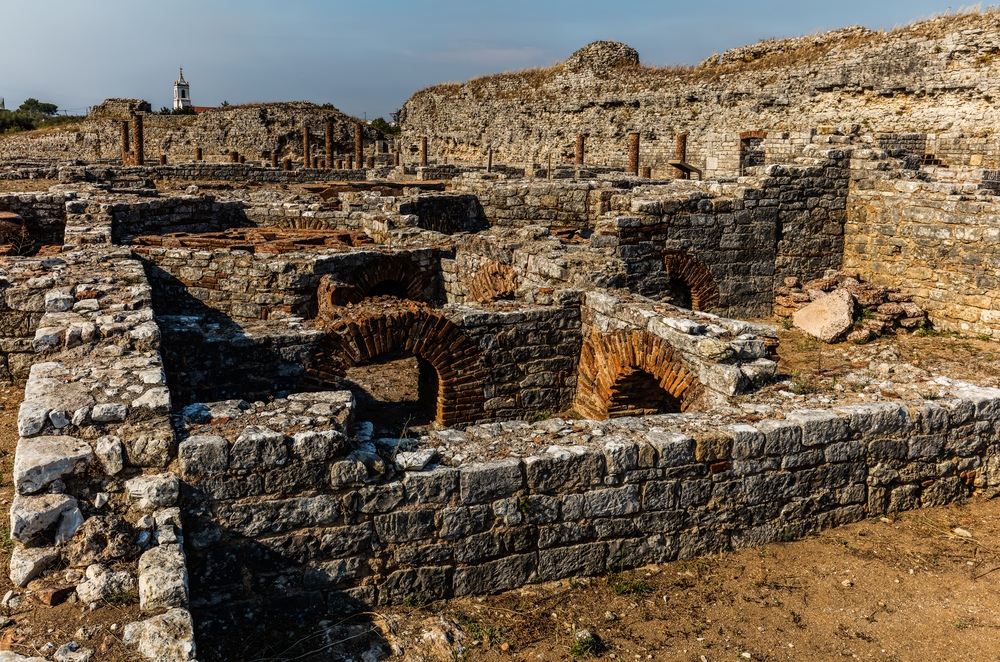
Conimbriga is an incredibly well-preserved Roman town in Central Portugal. It is well known for its mosaics.
Conimbriga, however, is a mere 16 kilometers (10 miles) away from Coimbra. It is one of the most complete Roman ruins uncovered in Portugal. The city consists of a forum, basilica, baths, aqueducts, and private homes, as well as Paleo-Christian churches with wonderful mosaics. The visitors center doubles as a small archaeological museum. There is quite a bit to see here, and its a wonderful day trip from Coimbra.
Other day trips from Coimbra include the hillside village of Piodao, a historical schist village deep in the Serra do Açor mountains, and Aveiro, a coastal town reminiscent of Venice, Italy.
Tomar
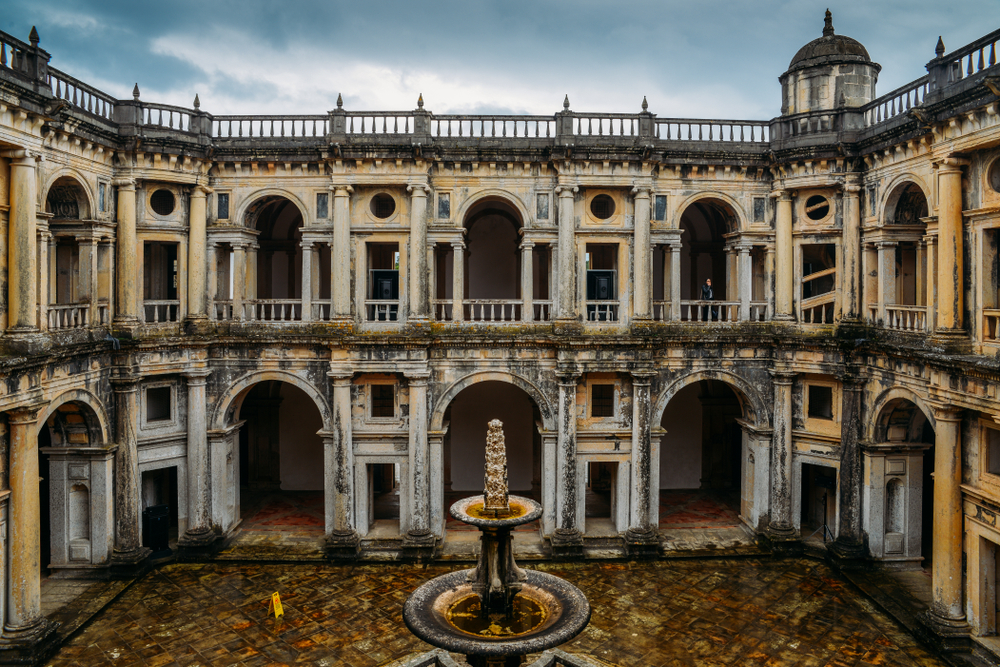
Tomar’s Convento do Cristo was once a Knights Templar stronghold. Alexandre Rotenberg / Shutterstock.com
Tomar lies south of Coimbra toward Lisbon. The Knights Templar founded Tomar, albeit its a somewhat mythical founding. The legend says that the Portuguese Grand Master received the land as a fief, and laid the first stone of what would be the castle and monastery. The town grew up within the walls of the castle and monastery, the Convento de Cristo, and was a staunch defender of Portugal’s borders.
When the Knights Templar disbanded in the 14th century, the convent turned into the headquarters for the Knights of the Order of Christ, which was a strong supporter of Portugal’s overseas expansion projects. It is an exceptional example of Manueline architecture, especially along the church nave.
Roman ruins in this area include the aqueduct, along which runs the pilgrimage trail to Fatima.
Fatima
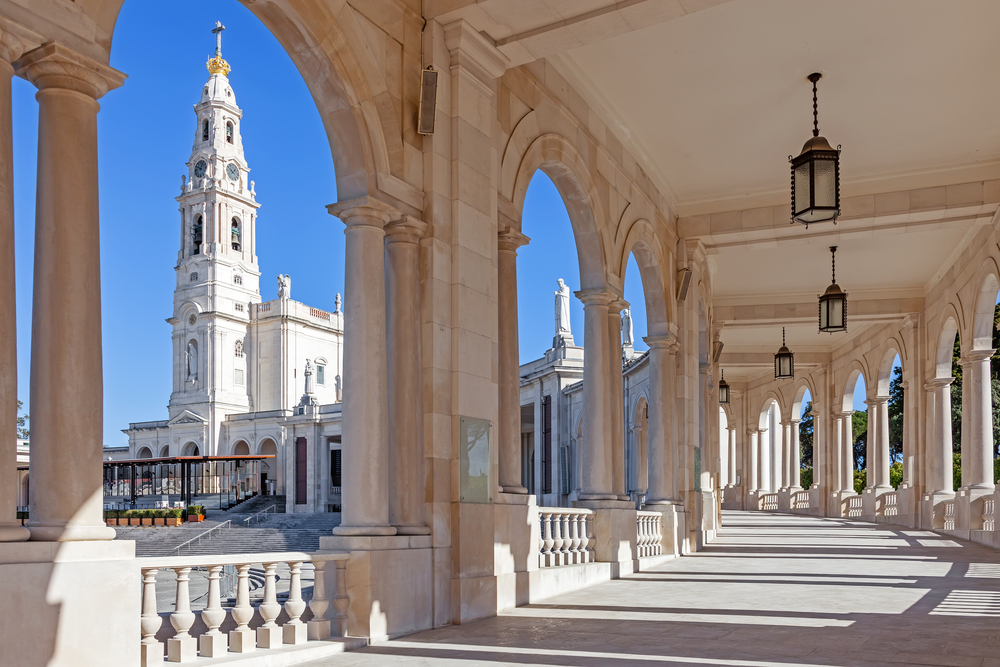
Fatima is the fourth most-visited Catholic pilgrimage site. Located just west of Tomar it is easy to get to either on foot (well-marked trails), car, or a combination of train and local bus.
Despite its Moorish name (Fatima was the daughter of Muhammed), the small village of Fatima is where three young children reportedly saw the Virgin Mary. The Catholic Church deemed this worthy of belief, and built a small church, then later a cathedral, on the site at Cova da Iria. Today it is called the Sanctuary of Our Lady of Fatima. At least five million Catholic pilgrims visit the site annually. There are numerous churches in Fatima, including several within the covent and hospital complex at the cathedral. The Basilica of the Holy Trinity, located inside the complex, is the fourth largest Catholic church in the world.
While many pilgrims simply come to Fatima by car, there are thousands of others who make the pilgrimage on foot. During my visit to Tomar, we saw arrows pointing pilgrims along the path that follows the top of the Roman aqueducts. Blue arrows lead west to Fatima while the yellow arrows point north, to Santiago de Compostela in Spain.
Where To Stay In Central Portugal
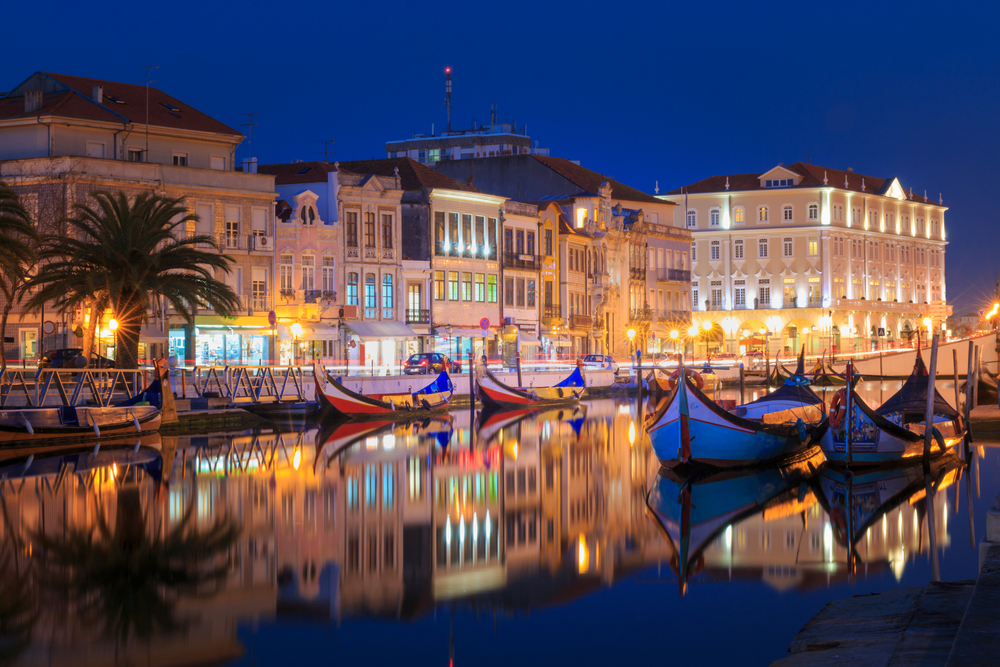
Aveino, on the coast of Central Portugal, is considered the Venice of Portugal, for its canals and brightly colored gondolas.
While Central Portugal doesn’t have the range of hotel options that both Lisbon and Porto have, there are some excellent gems here. Travelers can choose from small bed and breakfasts to mid-range independent hotels.
Ultimate, U.S. travelers will more likely than not fly into the big cities of Lisbon or Porto, then use ground transportation to get here.
Coimbra boasts a five star hotel, Quinta das Lagrimas, a member of Small Luxury Hotels. In Tomar, the largest property is the Hotel dos Templarios, about 200 metres from the convent.
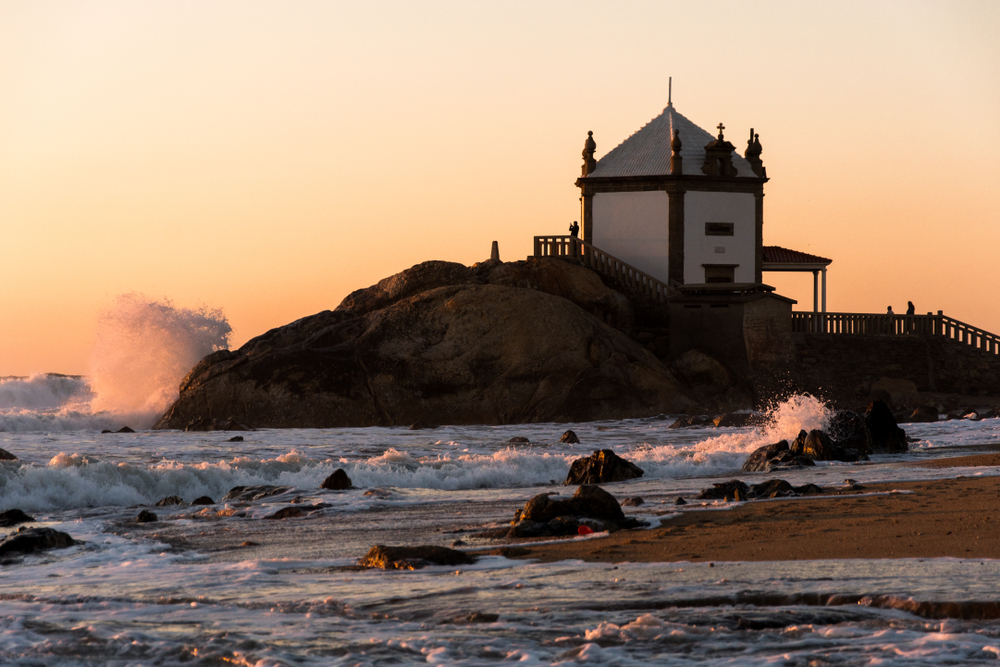
Aveiro, on the Central Portugal coast, is an easy day trip from Coimbra. It is just south of PortoOvar.
Of the three towns, Fatima has the most accommodation options. Here, though, you’re more likely to find pilgrim or backpacker rooms, especially within the cathedral and convent complex. For truly luxurious choices, look outside of the towns for bespoke, intimate properties. In Serra de Estrela, near the natural park, the eight-room Casas da Lapa is a family-run inn with a focus on hiking, food, and wine tourism. Across at the coast in Ovar, the Furadouro Boutique Hotel and Spa invites guests to relax, either on the wide stretch of white sand at your doorstep or in the Turkish baths. And in Penalva do Castelo, near Viseu, the 18th century Baroque palace is now the five-star Casa da Insua, a magnificent museum slash hotel with a winery.
However, if you’re traveling on points, or hoping to snag some while traveling, you’re out of luck in this region.
**
Central Portugal is truly a wonderful place to explore; with even just a week in Portugal, you’ll be able to see the main sights here as well as both Lisbon and Porto.
*
Sarah is a luxury travel advisor and avid traveller. When she isn’t writing for Point Me To The Plane you can find her crafting custom itineraries for clients or exploring the far reaches of our wonderful planet. Read more about her adventures at The Girl With the Map Tattoo.
The responses below are not provided or commissioned by the bank advertiser. Responses have not been reviewed, approved or otherwise endorsed by the bank advertiser. It is not the bank advertiser's responsibility to ensure all posts and/or questions are answered.
4 comments
Hi Sarah, thanks for your informative pieces on Portugal! We are planning a trip there next Fall! We plan on flying into Lisbon and work our way up to Porto, Douro Valley & then back to Lisbon. Quick question, we (4 adults & a 2 year old baby) are thinking of renting a car:
1) How are the highways/roads from Sintra–>Porto–>Douro Valley–>Lisbon?
2) Will driving/renting a car be a good idea?
3) Any recommendations on where (which company) to rent from?
Hi Tig, thanks for asking. The roads between the major towns are good – there is a main highway from Porto into the Douro, and from Port to Lisbon. Near Lisbon, the road to Sintra is smaller and narrow but still a main road (just not a highway). I wasn’t driving, but we did have a van and driver and nothing ever seemed difficult. (Except, I would add, near Sintra because the sides of the road are stone walls.) If you’re going off the beaten track (ie beaches or mountain villages), the roads could get narrow and gravelly but otherwise they’re like other roads in western Europe – paved, lined, and well-sign-posted.
As for a good idea… I’m a huge proponent of driving myself around … I feel like I get a better feel for the destination so unless it’s literally unsafe, I always suggest driving! Some friends of mine went in April, and rented a van for 3 weeks, they had no issues with renting it or driving it. If you’re not comfortable driving, then hiring a driver is an alternative but that’s $$$.
Company-wise, I use AutoEurope for my clients who want to drive in Europe; they pull from all the big ones (Avis, Hertz, Budget, Enterprise, Sixt, etc), who also have offices in Lisbon. Hope all that helps! Cheers
Great information! Thank you so much for your research. We are traveling in Portugal for 10 days this October.
A couple questions: Did you visit the area in the north near Gerés? Curious of your thoughts on the coast of central Portugal vs the Algarve… we had originally planned to travel to the Algarve area after 4 days in Lisbon. However, after much research, it seems golf and nightlife rules the Algarve beach areas. We are more interested in the true culture of Portugal. Any feed back would be appreciated.
Hi Darcy, thanks for commenting! The farthest north I got was Vidago, which is still a little south of the Geres Region. I would say if you’re more into culture, you definitely want to go north … visit Tomar, Coimbra, and Guimaraes. Guimaraes was the first capital of Portugal, and Coimbra was the second, so plenty of culture there!